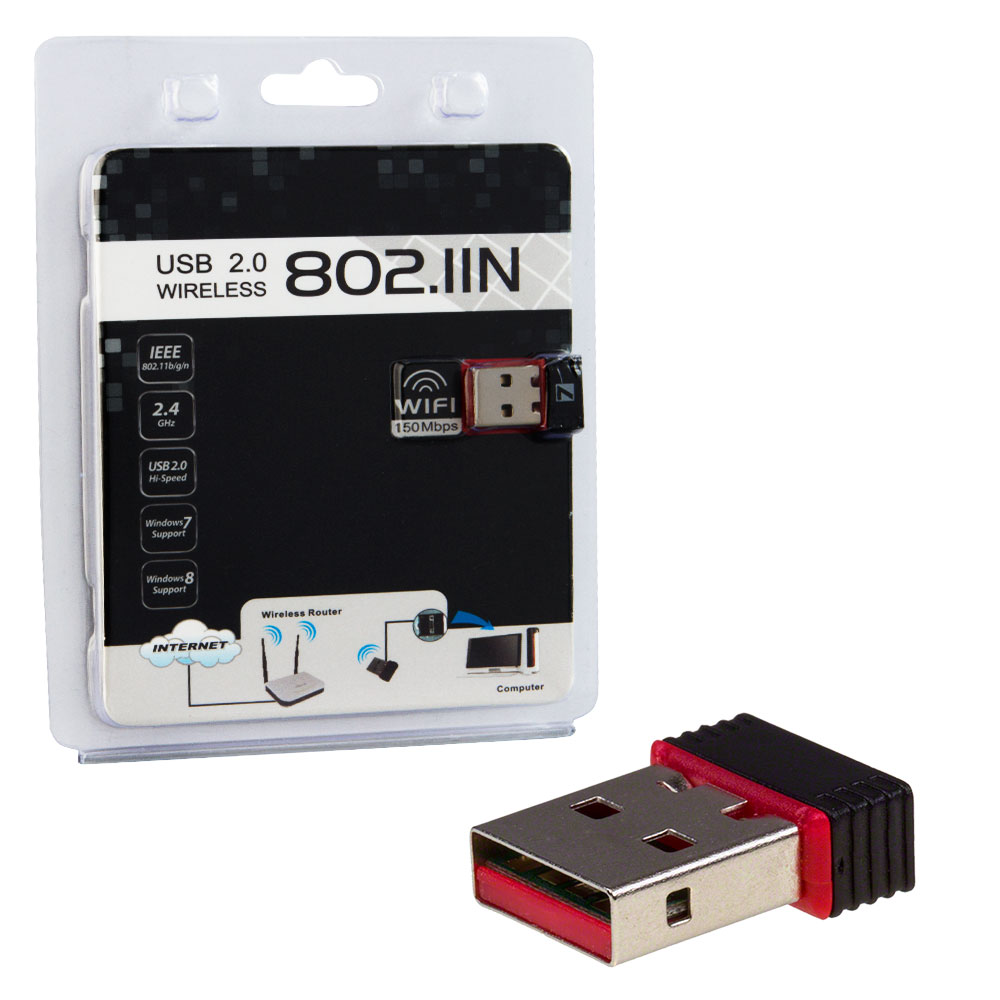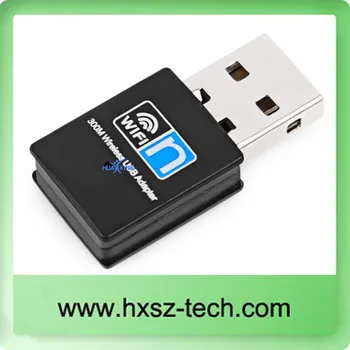Wifi Usb For Mac
Aug 31, 2020 Works with both Windows and Mac. Netgear A6150 AC1200 WiFi USB Adapter The Best Compact USB Wi-Fi Adapter. Netgear A6150 AC1200 WiFi USB Adapter.
Mac gui for ffmpeg. Load your video filesAfter you install and launch iSkysoft program on your Mac computer, please drag and drop the videos to it. Or go to the main menu and then choose 'Add Files' to add your video files.Step 2.
Use Wi-Fi
Apple iMac and Macbook's built-in wireless card is known to have limited coverage as it does not feature an external antenna for better signal reception, however we can easily boost the Wi-Fi signal strength and range of any Apple Mac computer using external USB wireless dongles with external antenna. To get this working make sure you have an WiFi USB Adapter which is compatible with Apple Mac. New WiFi Life For Your Computers with USB WiFi. Older computers can cut the cord – the Ethernet cable. And Windows-based laptops and computers that use WiFi can have a new life with NETGEAR WiFi Adapters. Essential for a high-quality Internet connection – WiFi adapters are designed to offer the best connections available.
Learn how to connect to an open, secure, or hidden Wi-Fi network. You can also create a new Wi-Fi network.
Connect to a Wi-Fi network
Click in the menu bar, then choose a network. If Wi-Fi is off, click , then select Turn Wi-Fi On.*
If you connect to a public Wi-Fi network, a window might appear with terms and conditions you're asked to agree to before you can connect.
Connect to a secure Wi-Fi network
Secure Wi-Fi networks are password-protected and have by their names.
- Click in the menu bar. If Wi-Fi is off, click , then choose Turn Wi-Fi On.*
- Choose a network.
- Enter the password, then click Join. If you don't know the password to the Wi-Fi network, contact the network administrator.
Connect to a hidden network
- Click in the menu bar. If Wi-Fi is off, choose , then choose Turn Wi-Fi On.*
- Choose Join Other Network.
- Enter the network name. Make sure you enter the network name correctly.
- If the network is secure, choose the Security type, then enter the password.
- Click Join.
Learn what to do if you can't connect to a hidden network.
Create a Wi-Fi network
If you have Internet service at your location, you can connect an AirPort base station or a third-party router to your modem to create a Wi-Fi network. Use the setup guide for your AirPort base station, or check your third-party router's manual for help.
* If you don't see the Wi-Fi icon in the menu bar, you can add it back. Choose Apple () menu > System Preferences, click Network, click Wi-Fi, then select 'Show Wi-Fi status in menu bar'.
Use Personal Hotspot

With most carrier plans, you can share the cellular data connection of your iPhone or iPad (Wi-Fi + Cellular) with your Mac.
Learn how to set up Personal Hotspot.
Use Ethernet
To connect to the Internet over a wired connection, connect an Ethernet cable between your router or modem and the Ethernet port on your Mac.
Usb Wireless Adapter For Mac

Some Macs require an Ethernet adapter like the Belkin USB-C to Gigabit Ethernet Adapter, or the Apple Thunderbolt to Gigabit Ethernet Adapter.
You have to format the StoreJet before using on your Mac. Please follow the steps below to format your StoreJet. For Mac users, you can use the built-in formatting tool. Warning: All your data will be deleted after formatting. Please back up your data beforehand.Step1: Click Go, and click Utilities. Step2: Click Disk Utility. Sturdy and elegant design. Transcend's StoreJet 500 features a high-quality metallic design that complements your Mac with a sleek and elegant look. In addition, the StoreJet 500 is natively formatted to the HFS+ file system, and fully supports Time Machine backup. Transcend's StoreJet 25M3C ruggedized external hard drive features the USB 3.1 Gen 1 interface and a USB Type-C port for unmatched transfer rates, and comes with both a USB Type-C cable as well as a Type-C to Type-A cable for max compatibility across devices. Supreme shock-resistant qualities ensure superior protection for data stored on the drive. Transcend's StoreJet for Mac series is portable storage featuring a streamlined exterior and immense storage capacity up to 1TB. The sturdy metallic design complements your Mac with a sleek and elegant look. The StoreJet for Mac series offers incredible speeds by using SSD as storage media, and adopting the USB 3.1 and Thunderbolt interfaces. Transcend's StoreJet 500 is a portable solid state drive specifically designed for your Mac. Equipped with both Thunderbolt and USB 3.1 Gen 1 interfaces, the StoreJet 500 offers unmatched transfer rates to boost your productivity. In addition, its sturdy metallic design complements your Mac with a sleek and elegant look. Transcend storejet software for mac.
Learn more
- Use recommended settings for Wi-Fi routers and access points.
USB port types and names
USB (Universal Serial Bus) is an industry standard for connecting computers and other devices. It's available with many types of ports, and each type has a unique shape. On Mac computers, USB is available with these ports, depending on your Mac model:
USB-A
Mac Os Usb Wifi
Type USB-A ports are commonly called USB, USB 2, or USB 3 ports, depending on the USB specification they support. They aren't reversible, so a USB-A connector plugs into the port only when oriented correctly.
USB-C
Type USB-C ports are available as either standard USB-C ports or Thunderbolt 3 ports that also support USB-C connections. They both look the same, and the connector plugs into the port in either orientation.
Wifi Usb For Mac Desktop
Learn more about identifying the ports on your Mac, as well as the adapters and cables you can use to connect older devices to type USB-C ports.
USB specifications

USB specifications are important primarily when you want the most speed and power for your USB device, or your device needs more power or is using too much power. Every USB port supports a particular USB specification, which determines the port's maximum>USB specifications on MacData transferPowerUSB 3.1 Gen 2
Also known as USB 3.2 Gen 2
Up to 10 GbpsUp to 15W at 5VUSB 3.1 Gen 1
Also known as USB 3.2 Gen 1 or USB 3
Up to 5 GbpsUp to 900 mA at 5VUSB 2.0
Up to 480 MbpsUp to 500 mA at 5VUSB 1.1
Up to 12 MbpsUp to 500 mA at 5V
.jpg)
To learn which specification is supported by a type USB-A or type USB-C port on your Mac model:
- Choose Apple menu > About This Mac, click Support, then click Specifications.
- Check the System Information app for more details, including about USB devices connected to USB ports on your Mac. Select USB in the sidebar, then select a USB bus on the right.
Get the best performance from your USB devices
USB specifications all work with each other, but speed and power are limited by the cable or device that uses the earliest specification. For example, if you connect a USB 3 device to USB 2 port, your device is limited to USB 2 speeds, and it can't draw more power from the port than can be delivered over USB 2. In other words, to get the best performance, make sure that the USB port on your Mac and the USB cable to your device meet or exceed the USB specification of the device itself.
If your Mac doesn't recognize a USB device after you plug it into your Mac:
- Check all connections: Unplug the device from your Mac, then plug it back in, and make sure that all cables and adapters are securely connected at both ends. Test with another cable or adapter, if available.
- Plug the device directly into your Mac instead of a USB hub or other device, and if necessary test with a different USB port on your Mac or device.
- Some devices need their own software, such as drivers or firmware. Others work without additional software. Check with the maker of your device, and install all available Apple software updates as well.
- If your device came with an AC power adapter, use it. Some devices can be powered by the USB port on your Mac. Others need more power than your Mac can provide.
- Restart your Mac.
Learn more
- USB 3 devices can create wireless interference that affects Wi-Fi and Bluetooth devices. Learn how to resolve Wi-Fi and Bluetooth issues caused by wireless interference.
- Mac notebook computers with USB-C or Thunderbolt 3 can charge over that port using a compatible USB-C power adapter and cable.
